This blog post was written by WeCloudData’s Data Science Instructor, Vinny Nguyen.
Hi! I’m Vinny and I’m a data science instructor here at WeCloudData. I’d like to tell you a little about my journey through data science, some tips I’ve learned along the way, and how that influences our teaching methodology here at WeCloudData.

Transitioning from a Web Developer to Data Scientist
If you’re completely new to data science or want to switch into it from a different field, it can be quite daunting figuring out where to start. As a career switcher as well, I’ve found some things that have helped the transition. Previously, I had worked at various startups as a web developer. While it was an exciting and rewarding career, it wasn’t quite for me. I enjoyed the programming aspect but wasn’t particularly interested in the products we were building. As a lazy and often impatient programmer, I always liked the idea of being able to automate tasks. Letting the algorithm ‘learn’ from data to guide decision making or perform certain objectives. This naturally led me to machine learning and Data Science. Also, since Data Science is a combination of multiple disciplines (Math, Programming, Domain Knowledge) this seemed like a better fit for me.
Once I was interested in the topic, I did what anybody would do. I googled everything there is to know about data science. I watched videos, read books, articles, and learned Python. While it was fun and I felt like I understood a lot of the topics, I realized quickly that I was hitting a dead end. The problem was, without actually trying these things out on my own and working on real data science projects, I could talk the talk but couldn’t walk the walk.
This I think is one of the major benefits WeCloudData provides. Our course is designed to be project first and the lectures are designed to be dynamic and interactive. I like to make the distinction between passive learning and active learning. Passive learning is the kind of stuff I was doing before, watching lectures and reading books without really engaging. This gave me the illusion of understanding, without really understanding. I could only absorb so much information and a lot of it would be quickly forgotten because of the lack of reinforcement. With active learning on the other hand, our lectures are designed so you’re encouraged to actively participate, think critically, and try things out while receiving feedback.
How I Incorporate Active Learning into Lectures
Lectures are usually set up so you’ll follow along with what I do. I’ll explain the concepts and type the code and you’ll try it out on your computers as well. After you understand how it works and how to accomplish it with code, we pause to reinforce these concepts by working on exercises. Sprinkled throughout the lecture we have multiple exercises so you’re forced to actively think about what you just learned and how to apply it yourself. I like to think about it the same way you’d learn how to do something like swimming. You could watch some videos or read a book, but without actually getting in the water and practicing the strokes, you won’t be able to swim. You’re also encouraged to ask lots of questions and again, actively participate. We also have group discussions and presentations so you can learn from your peers. Since data science is a collaborative effort, learning to work with others, practicing communication skills and presentation skills are just as important as the technical skills. Lastly, listening to someone talk for three hours straight is really boring for both the audience and the lecturer, so hopefully this keeps you engaged and motivated.
Learning Beyond the Classroom
Having said that, after lecture I think is where the real learning starts. You’ll work on more exercises to reinforce the concepts and get lots more practice with programming. You’ll also work on many academic projects and client projects. Here’s where you’ll find the theory often doesn’t match with the real world. When we have nice, clean, neat data everything is easy. The real world on the other hand is a lot messier. Which is why it’s necessary to work on these projects, so you can run into issues, make mistakes, and ultimately learn how to improve. You’ll also learn how to learn which I believe is just as important as well. Data Science is a very fast-moving industry, ideas and tools are consistently changing, so learning and being to do your own research will always be part of the job. But of course we’ll be here to guide you along the way and provide feedback and support. Data science is an exciting and rewarding field and we hope WeCloudData can help you reach your data science goals.

